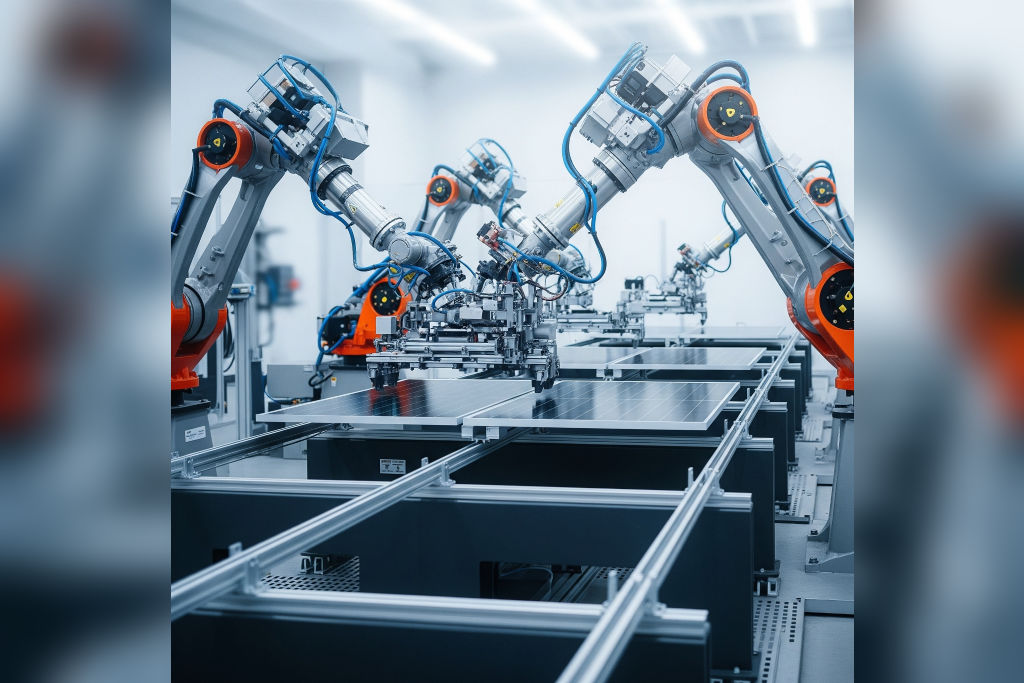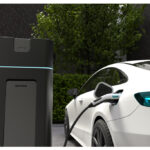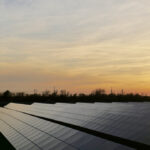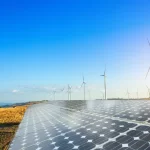How Automation is Revolutionizing Solar Farm Installation
Renewable energy reactions around the globe have resulted in great breakthroughs in the field of solar energy which now produces solar power more efficiently and affordable and within the reach of people. One of the most groundbreaking innovations in this sector is the automation of solar farm installation, which promises to revolutionize how large-scale solar projects are deployed. With the increasing demand for sustainable energy, companies are leveraging automation, robotics, and artificial intelligence to enhance the efficiency and effectiveness of solar farm installation. Smart solar solutions, such as solar tracking technology and automated assembly systems, are optimizing the process of setting up solar farms, reducing labor costs, and improving installation speed.

Charge Robotics, a startup run by Banks Hunter and Max Justicz of MIT is one of the most innovative players in this area. This firm has also come up with a complex process of automation that is meant to facilitate the process of building solar farms so that they are capable of being deployed faster and with greater accuracy. By integrating cutting-edge solar robot technology, Charge Robotics is setting new benchmarks in the optimization of solar energy systems. The article examines the revolution of automation in the solar energy industry covering the most important technologies behind this revolution and their value to the industry.
The Need for Automation in Solar Farm Installation
Solar energy is a rapidly growing industry, but traditional solar farm installation methods come with several challenges, including:
- High Labor Costs: The labour cost involved in solar panel installation is high since a lot of workforce is involved.
- Time-Consuming Processes: Manual installation process of thousands of solar panels takes weeks, there are even cases when months are needed and projects are delayed.
- Workforce Shortages: With the rising demand of solar farms the shortage of skilled workers is also becoming a bottleneck.
- Inconsistencies and Errors: Manual work attracts human errors thus causing inefficiencies and thus losses in energy production.
To address these challenges, automation and robotics are playing a crucial role in smart solar solutions, ensuring that solar farms are installed faster, cheaper, and with greater precision.
Charge Robotics: Pioneering the Future of Solar Installation
Charge Robotics is leading the charge in this technological revolution with a solar robot system that eases the installation process. Established by MIT graduates Banks Hunter and Max Justicz, the firm is dedicated to automation-based solutions that improve the efficiency of solar farm construction.
How Charge Robotics Works
Charge Robotics has created an automated robotic system that is meant to carry out important installation processes with accuracy. Their system consists of:
- Automated Panel Handling: Robots are able to lift, position, and align the solar panels on the mounting structures with minimal human effort.
- Accurate Drilling and Fastening: Sophisticated robotic arms guarantee that solar panels are safely drilled and fixed, minimizing risks of misalignment or structural failure.
- AI-Optimized Optimization: The system employs artificial intelligence to review site conditions and make real-time modifications for maximizing installation efficiency.
This level of automation is significantly improving the optimization of solar energy systems, enabling faster deployment while maintaining high-quality standards.
The Role of Solar Tracking Technology in Automation
Another key innovation driving solar farm installation automation is solar tracking technology. Traditional solar panels remain fixed, but solar tracking systems enable panels to follow the sun throughout the day to maximize energy harvesting.
Benefits of Solar Tracking Technology
- Increased Energy Output: Solar trackers adjust the panel’s inclination for optimal sun reception, raising efficiency by 20–30%.
- Reduced Space Requirements: With higher efficiency in energy capture, fewer panels are needed to generate the same quantity of energy.
- Improved ROI: Although solar trackers are more expensive at the outset, they generate more in the long run through increased energy output.
Combined with automation and robotics, solar tracking technology enables a seamless and smart solar farm installation process and further optimizes performance and reliability.
Advantages of Automated Solar Farm Installation
1. Faster Installation and Deployment
Automation cuts the time taken to construct large solar farms by a major margin. Robots don’t tire out and hence can work day and night, ensuring jobs are done in record time.
2. Cost Reduction
Having less need for manual labor, automation ensures that operational costs are cut. Lower labor costs ensure that solar power becomes cheaper for consumers and businesses.
3. Improved Safety
Manual installation of solar panels is dangerous, particularly in commercial-scale projects. Robots assume dangerous tasks, lessening workplace accidents and providing safer working conditions.
4. Higher Precision and Efficiency
Pre-programmed routes are taken by robots, and their work is performed with precision that human beings cannot match, removing the possibility of human error leading to inefficiencies.
5. Scalability for Future Growth
Automation makes it easy for solar companies to increase operations at a fast rate, coping with the increased demand for renewable energy solutions.
The Future of Smart Solar Solutions
As technology continues to evolve, the automation of solar farm installation is expected to become the industry standard. Advances in AI and machine learning as well as robotics will further increase efficiency, making solar energy available and cost-efficient. Charge Robotics and other pioneering companies are leading the way in solar robot development, paving the path for a cleaner and more sustainable energy future.
Conclusion
The automation of solar farm installation marks a significant milestone in the renewable energy industry. By leveraging smart solar solutions, solar tracking technology, and robotic automation, companies like Charge Robotics are transforming the way solar farms are deployed. Such innovations make the installations quicker, save money, are more effective and secure, and guarantee that solar energy will not stop expanding as one of the most suitable and dominant sources of power across the globe. With ongoing innovations, the optimization of solar energy systems will only improve, further solidifying solar power as a key player in the global energy landscape.
The solar industry has not only managed to shake off current problems but also establish a new performance threshold that is to be achieved in the future renewable energy. With the incorporation of solar robots technology, large-scale solar projects have become more probable, more reliable and more efficient than ever.
Frequently Asked Questions (FAQs)
Automation reduces manual labor, speeds up the installation process, and enhances accuracy in solar panel alignment, leading to cost savings and improved energy efficiency.
Solar tracking technology adjusts the angle of solar panels to follow the sun’s movement throughout the day, maximizing energy absorption and optimizing solar power output.
Charge Robotics, founded by MIT alumni Banks Hunter and Max Justicz, develops robotic systems that automate solar farm installation, making the process faster, more accurate, and cost-effective.
Smart solar solutions integrate automation, AI, and robotics to enhance efficiency, reduce costs, and optimize the performance of solar farms, ensuring higher energy output and sustainability.
While solar robots automate repetitive and physically demanding tasks, they complement human labor rather than replace it, allowing workers to focus on more complex aspects of solar farm development.












